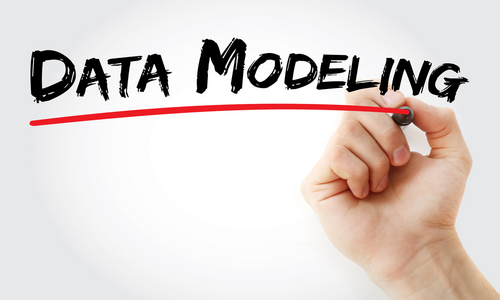In today’s data-driven world, organizations are constantly seeking ways to extract meaningful insights from vast amounts of information. Power BI, a powerful business intelligence tool developed by Microsoft, enables users to transform raw data into actionable visualizations and reports. One crucial aspect of this process is data modeling. In this blog post, we will delve into the world of data modeling in Power BI.

Jump ahead to
Understanding Data Modeling
Data modeling in Power BI involves structuring and organizing user data to optimize its usage for analysis and reporting purposes. It allows users to create relationships between multiple tables, define hierarchies, and apply calculations and measures to facilitate accurate data analysis. By effectively modeling user data, users can unlock the full potential of Power BI, enabling users to make informed business decisions based on reliable insights.
Key Components of Data Modeling
- Tables: Power BI relies on tabular structures for data storage and analysis. Tables act as containers for user data and are essential building blocks of the modeling process. They represent various entities or data sources within the organization, such as sales, customers, or products.
- Relationships: Establishing relationships between tables is a fundamental aspect of data modeling. Relationships define how tables connect based on common fields or columns. By creating relationships, users can merge data from multiple tables and perform comprehensive analysis across different datasets.
- Calculated Columns: Calculated columns allow users to create new columns in a table by applying calculations or formulas to existing data. This feature is particularly useful when users need to perform complex calculations or derive additional insights from user data.
- Measures: Measures are powerful calculations that provide aggregated results based on specific criteria. They allow users to perform calculations such as sums, averages, or counts, enabling users to derive meaningful metrics from user data. Measures are commonly used in creating key performance indicators (KPIs) and are crucial for data analysis and reporting.
Benefits of Data Modeling in Power BI
- Improved Data Accuracy: Data modeling ensures consistency and accuracy in user data analysis. By establishing relationships and defining constraints, users can avoid duplicate or conflicting information, leading to more reliable insights and decision-making.
- Enhanced Data Exploration: Data modeling allows users to navigate through complex datasets with ease. With well-defined relationships and hierarchies, users can drill down into specific dimensions, enabling deeper exploration of user data and uncovering valuable patterns and trends.
- Simplified Reporting: By creating calculated columns and measures, users can streamline the process of creating reports and visualizations. Users reuse these calculations across various reports, saving time and effort while ensuring consistency.
- Efficient Data Analysis: Data modeling empowers users to perform advanced analysis and calculations on their data. With the ability to create complex measures and apply filters, users can gain deeper insights into their data and answer complex business questions.
Types of Data Models in Power BI:
Hierarchical Model:
The hierarchical model the early database models used to organize and store data. It represents data in a tree-like structure with parent-child relationships. In this model, data is organized in a top-down hierarchy, where each parent can have multiple children, but each child has only one parent. It primarily focuses on the the concept of parent-child relationships and represents hierarchical data such as organizational structures or file systems. However, the hierarchical model has limitations in handling complex relationships and lacks the flexibility offered by other database models.
Relational Model:
The relational model is widely used database model in modern information systems. It organizes data into tables, with each table consisting of rows (tuples) and columns (attributes). The model emphasizes the relationships between tables using keys, allowing data to be linked and retrieved using queries. It follows a set of mathematical principles, known as relational algebra, and is based on the concept of relational integrity. The relational model provides a flexible and efficient way to store and manage structured data, and it forms the foundation for relational database management systems (RDBMS) such as MySQL, Oracle, and Microsoft SQL Server.
Network Model:
The network model is another early database model that evolved from the hierarchical model. It represents data using a network of records connected through multiple relationships. Unlike the hierarchical model, where a child can only have one parent, the network model allows each record to have multiple parent and child records. It introduces the concept of sets to represent relationships between records, and these sets can be accessed using pointers. The network model offers more flexibility than the hierarchical model in handling complex relationships, but it can be more complex to implement and query compared to the relational model.
Entity-Relationship Model:
The entity-relationship (ER) model is a conceptual model for designing and representing database structures. It focuses on describing the entities (objects) in a system and the relationships between them. The model consists of entities (represented by rectangles), attributes (properties of entities), and relationships (connections between entities). Relationships can be one-to-one, one-to-many, or many-to-many, and they provide insights into how different entities align. The ER model is often used during the database design phase to capture the essential components and relationships of a system, which can later be translated into a physical database schema using a specific database model such as the relational model.
Each of these models offers a different approach to organizing and structuring data, with varying strengths and weaknesses. The choice of model depends on the specific requirements of the application, the complexity of the data relationships, and the capabilities of the database management system.
Conclusion:
Data modeling is a crucial aspect of utilizing the full potential of Power BI for data analysis and reporting. By structuring and organizing user data effectively, establishing relationships, and leveraging calculated columns and measures, users can unlock meaningful insights and drive informed decision-making. With Power BI’s data modeling capabilities, businesses can harness the power of their data. This further helps in transforming it into actionable visualizations and reports that drive success. Professionals can get hands-on experience of data modeling with Power BI Data Analyst Certification Training.



